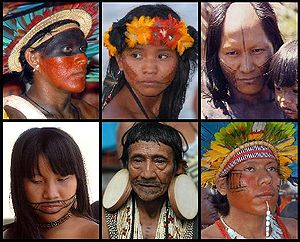As in Africa there are many different tribes, with different beliefs and history, I chose to concentrate on the largest one, the Zulu tribe.
The Zulu are the largest ethnic group in South Africa. They are well known for their beautiful brightly colored beads and baskets as well as other small carvings.
The Zulu believe that they are descendents from a chief from the Congo area, and in the 16th century migrated south picking up many of the traditions and customs of the San who also inhabited this South African area. During the 17th and 18th centuries many of the most powerful chiefs made treaties and gave control of the Zulu villages to the British. This caused much conflict because the Zulu had strong patriarchal village government systems so they fought against the British but couldn't win because of the small strength they possessed. Finally, after much of the Zulu area had been given to the British the Zulu people decided as a whole that they didn't want to be under British rule and in 1879 war erupted between the British and the Zulu. Though the Zulu succeeded at first they were in 6 months conquered by the British who exiled the Zulu Kings and divided up the Zulu kingdom. In 1906 another Zulu uprising was lead and the Zulu continue to try to gain back what they consider to be their ancient kingdom.
The Zulu believe in a creator god known as Nkulunkulu, but this god does not interact with humans and has no interest in everyday life. Therefore, most Zulus interact on a day to day level with the spirits. In order to interact with the spirits the Zulu must use divination to interact with the ancestors. All misfortune is a result of a evil sorcery or offended spirits, nothing just happens because of natural causes.
The Zulu are practically divided in half with about 50% living in cities and engaging in domestic work and another 50% working on farms.
























































